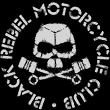TIMJOT
Posts: 1822
Joined: 4/30/2001
Status: offline

|
[QUOTE]Originally posted by mdiehl
"Four hits on Perth, we agree. (One after she was DIW -- dead in water) but four hits. Two to four on Houston, but most survivor accounts place the number at two. In calculating torp accuracy, I usually give the IJN 3 on Houston, just because I think it possible. Since the IJN sank 5 of their own ships in disparate places, Mogami's salvo does not account for the damage. Japanese accounst on the losses are sketchy at best, because in the flush of successive victories, nobody wanted to open an inquiry about which IJN skippers to sack for the error. It has been a darned long time since I've read an account from the Japanese targets, but, IIRC, three of these transports suffered multiple hits."
What most survivor accounts? Just how many survivor accounts have you read? My sources state that the Houston was hit by one torp initially an then by 3 in quick succession and may or may not have been hit by 2 more before she went down. Four IJN transports were hit by 6 Mogami torps. It is uncertain if the fith ship, a MSW was sunk by a torp, mine or gunfire from the Houston.
"That makes it 8 hits on Japanese vessels and 6-8 on Allied ones by my count."
That makes 6 hits on Japanese vessels and 8-10 hits on Allied ones by my count.
"At Balikpapan the IJN vessels sortied during the action. They went off looking for subs because they assumed that the damage occurring in harbor was caused by a submarine. Once clear of the harbor, they ought to have spotted the USN DDs. I can only explain their failure to do so to teh incorrect assumption of the prexsence of submarine, and therefore a general laxity about looking for surface vessels. Had they actually blundered into Pillsbury & Co, they'd have been torpedoed for their carelessness. Also, if the smoke from the battle was obscuring the Japanese view of the USN DD force, then it logically follows that the smoke was between the USN DDs and their targets. The relevance, however, is the common claim that IJN night optics and their users were so excellent and well trained that they were very reliable in adverse conditions. Clearly not the case at Balikpapan. Also, at Sunda Strait, Perth had the first obsersvation. I could double check Frank, but there was at least one instance where the USN made visual contact in that campaign prior to USN radar or Japanese visual, and there were several instances where the USN radar made first contact."
They assumed they were being attacked by subs because the Dutch sub K-XVII had been making attacks on the TF just prior to the US DD attack, scoring a torp hit on one transport. The initial pass positioned the US TF to the north where the prevailing winds and smoke from the oil fires provided a handy smoke screen. The IJN transports however could be seen through the smoke because *logically* they where effectively silohetted by those same oil fires. The US DDs fired a total of 48 torps at close range at clearly visible, defenceless and stationary targets and only 6 struck home. So why do you believe that Pope & Co (Pilsbury was not at Balikapan) would have faired better against combat vessels?
Re: Perth obsevation, you better double check, because and I quote " At 22:15 Fubuki has bout 2500 yrds east of Babi Island when it sighted *strange ships* Rounding the island to the east. She set course that took her north of the island and then turned to follow the suspected intruders" Shorty after 22:44 Perth detected Fubuki which had been following behind.
Re: first contact, I would expect the USN to make first contact everytime if they had radar.
"For all the training in night combat, it did not help the Japanese recognize SoDak for what she was until she opened fire. And there is some evidence that they mistook Chicago for a BB at Savo Isl. At 2nd Guadalcanal, not a single torp fired hit SoDak or Washington, despite overwhelming favorable circumstances."
Well the SoDak was a new class BB, besides several lookouts did indentify her as a BB, but the Admiral in charge refuse to believe it.
I may be wrong but I cant think of a single surface action in which the USN TF didnt have at least one ship with radar during the whole Solomons campaign. So its remarkable that the IJN ever got first contact.
|
 Printable Version
Printable Version










 New Messages
New Messages No New Messages
No New Messages Hot Topic w/ New Messages
Hot Topic w/ New Messages Hot Topic w/o New Messages
Hot Topic w/o New Messages Locked w/ New Messages
Locked w/ New Messages Locked w/o New Messages
Locked w/o New Messages Post New Thread
Post New Thread